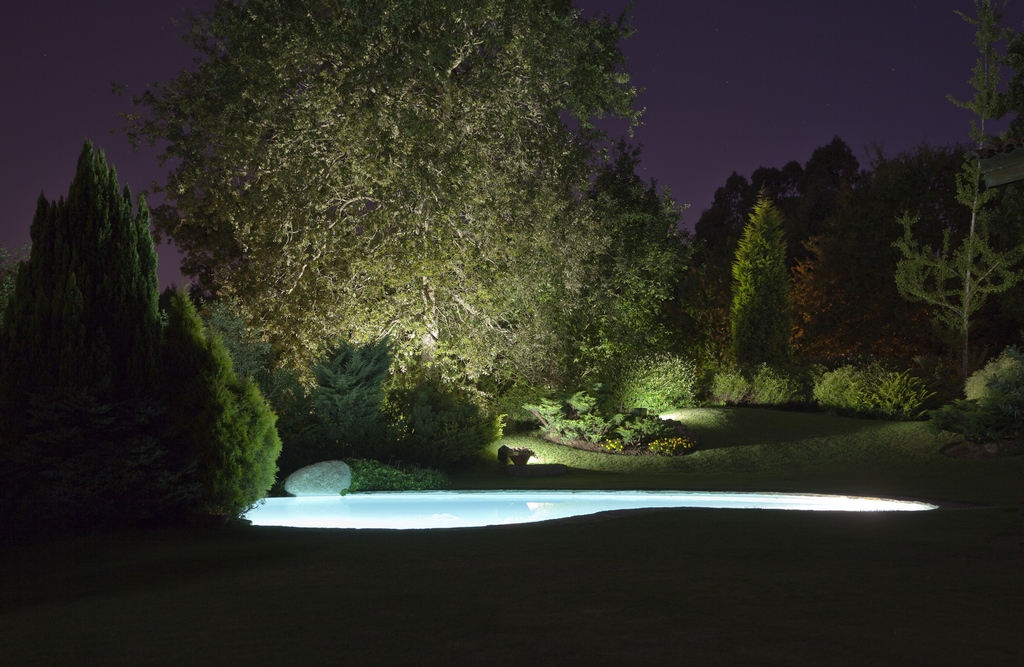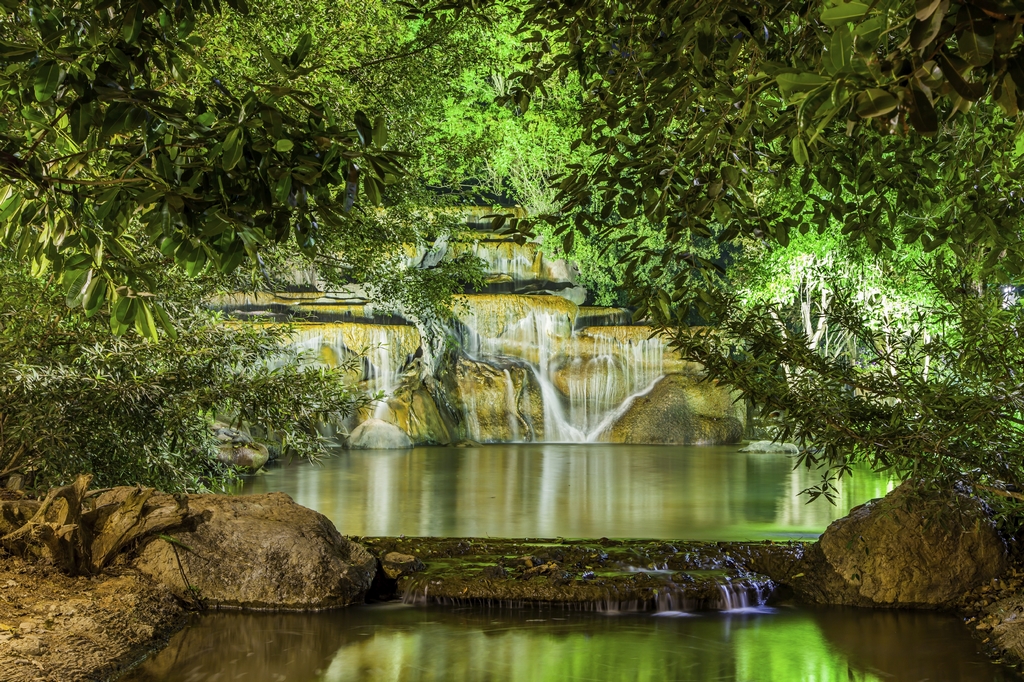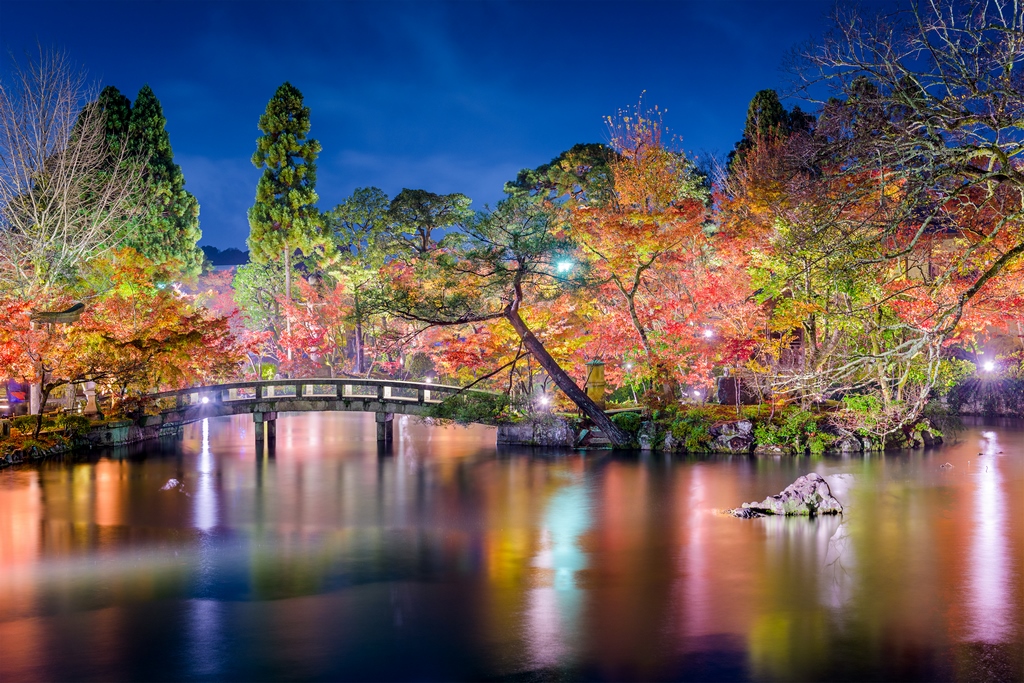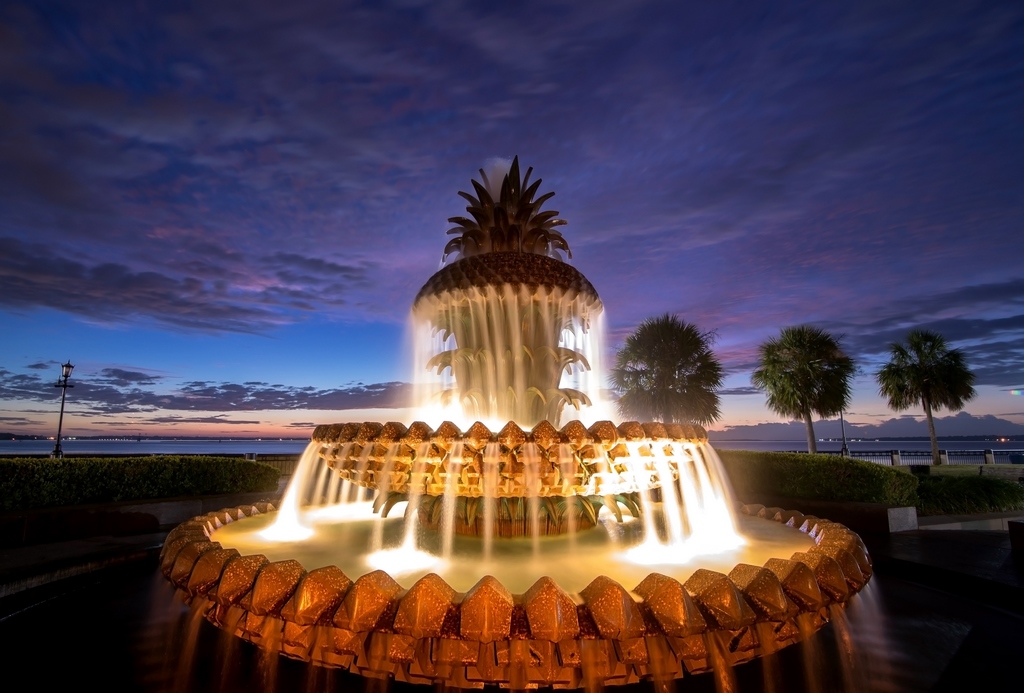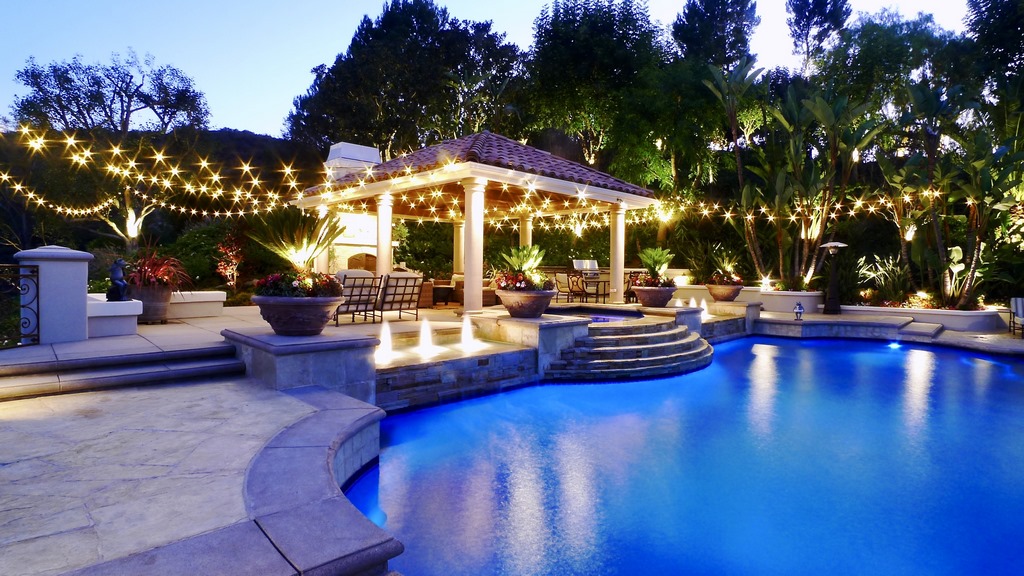Lighting by Design
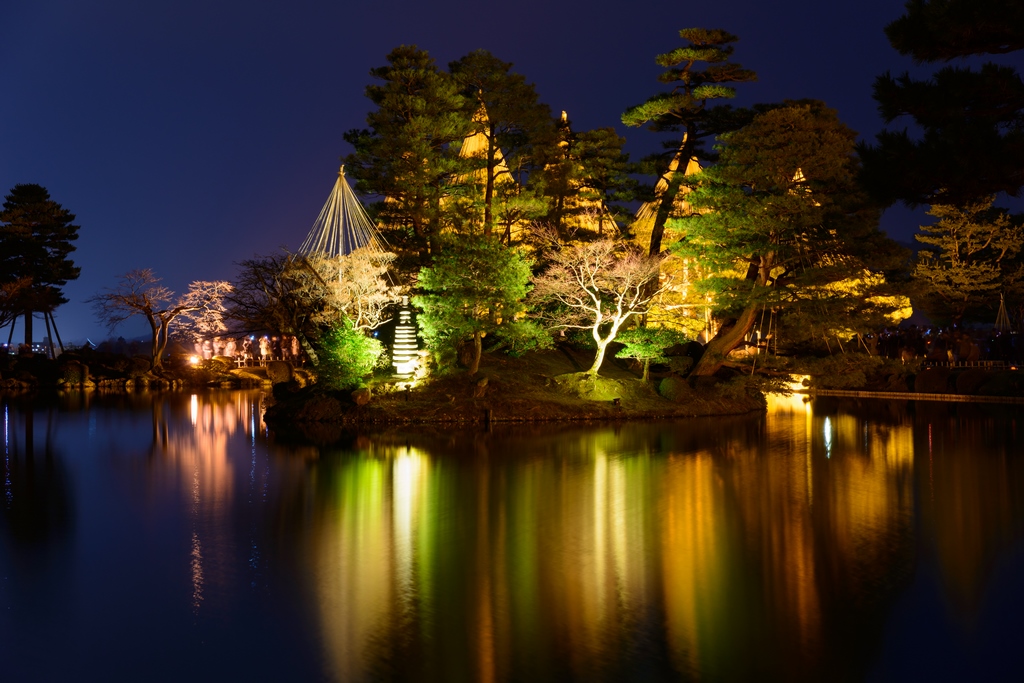
What’s involved in a good landscape-lighting project? Whole books have been written on this topic, and it’s not hard to find week-long workshops devoted to showing professionals how to produce finely illuminated environments for their clients.
If you’re a designer or a design-oriented contractor, however, I’d suggest that you have enough of a head start that we can set you off in a good direction with this brief article and its focus on the features of a good lighting program. You already think like an artist, which is great, and know how to identify focal points and think in terms of depth and perspective.
What often intimidates designers unfamiliar with lighting is the sense that it’s a numbers game and gets heavily technical in a hurry – lots of arcane information that makes you want to scream at the mention of color temperature, foot candles and transformers. So yes, a certain reluctance to get involved is natural, but what I want to demonstrate here is that it’s possible to achieve good or even great effects without making lighting a lifetime’s study.
ARTISTIC THINKING
As you know, most landscape projects and a great many watershape environments incorporate some level of outdoor lighting as part of the program. On the one hand, it’s all about safety and enabling homeowners and their guests to navigate a space after dark while avoiding missteps and other hazards. On the other, it’s all about beauty and settings that can be even more enjoyable by night than they are by day.
| Underwater lights in the watershape combine with landscape up-lights to create an otherworldly glow in the big adjacent tree, but the positive effects spread throughout the space with careful placement of supplementary fixtures that make the entire setting both mysterious and inviting. |
Property owners tend to know all this and want good lighting, and a great many of them are aware that the advent of reliable LED technology has made it possible to achieve the desired effects with more compact, more easily maintained and longer-lived systems – not to mention their lower operating costs and low-voltage convenience. And where landscape lighting was all about white light a generation ago, it’s increasingly about colors and a range of other interesting aesthetic possibilities.
This broadened opportunity makes it even more important to be able to think like an artist and approach a backyard as a complex canvas with unlimited potential with respect to light levels and colors. At that, it’s about much more than pointing fixtures and hoping: The advantage goes to those who know how to work with texture, contrast, depth, focal points, visual rhythm and continuity across a space.
|
Well-hidden lights set in the water and in spots around a pond and its cascade caress water, rock and plants with light and create a magical vision accompanied by wonderful sounds. |
This is, of course, the stock in trade of many landscape architects and designers, and it’s increasingly within the range of watershapers who’ve extended their reach beyond the water’s edge because they know about reflections and how landscape lighting works with mirroring surfaces with spectacular results. With water in the foreground, for example, all it takes is lighting a sculpture or hardscape structure or prominent tree in the background in such a way that its nighttime presence is effectively doubled.
It’s also important to consider balance and how lighting is placed through the entire space: What works best visually is a seamless, rhythmic flow created by lights of the same color in a layered approach that places soft light up front, medium light in the middle and brighter light in the back. This creates sweep, continuity and a perception of depth as well as general visual comfort.
| Glare is the nemesis of good lighting design and can repel those who are sensitive to the hotspots it creates. The good news is that it’s easy to avoid with the use of inground fixtures and those equipped with hoods and cowls that keep lights from shining too directly into anyone’s eyes. |
Think about zones, too, and setting them up in such a way that homeowners have a sense of control over outdoor rooms and spaces, how they’re to be used and what moods they embody. Depth and perspective come into play here, too, and are keys to visual comfort and harmony as people move from zone to zone.
Now consider the light’s intensity and how it plays across varied landscape elements: The sizes of trees matter here, and the same with art objects or architectural features that merit highlighting. The bigger the item being illuminated, the greater the need for control of the lighting’s intensity – which brings up a related and highly significant issue: You want to see the lighting effect, not the light’s source. And you want to avoid glare to the greatest extent possible!
Before we move on, let’s consider a couple more pitfalls to avoid: First, do not over-light! Lessmay notnecessarily be more, but it isn’t as visually bothersome. Second, avoid obvious visual patterns, particularly the “runway” or “landing strip” effect – appropriate for airports but overwhelming in a typical backyard. The goal instead is a random harmony that is often served by as simple a strategy as using an odd number of fixtures.
WEIGHTY POSSIBILITIES
With the above as background, it’s time to fold fixtures and their various profiles into the discussion – just after, that is, you settle on the type of lamp you want to use. These days, that choice has gotten pretty simple, with low-voltage LEDs stepping up to supplant incandescent lamps (or any other options, for that matter) in landscape-lighting applications.
And there’s a whole cluster of fixture approaches here: You can, for example, start by thinking about moods (romantic? bright? relaxing?) or architectural style (Mid-Century Modern? Gothic? Arts & Crafts?) and select fixtures in a conforming style. This thematic approach can head in any number of directions depending on setting and intended use.
| This setting has it all, from the good luck of seasonal-color displays to having a beautiful reflective surface to double the pleasure. Multiple approaches are used here – accent, path, and moonlighting most prominently – and fill the space with a warm, even glow. (Blame the hotspots on the long exposure needed to catch this much color in a nighttime photograph!) |
At this point, we need to get technical (briefly!) and mention Kelvin color (or color temperature) because of the direct role this factor plays in setting moods and striking visual balances. Most systems are available with what’s known as very warm light (2,700 K), warm light (3,000 K) or intense light (4,100 K), depending on need. It can take a bit of experimentation on site to get things just right with respect not only to Kelvin color, but also light level (in watts) and beam angles.
Beam angle and light spread tend to work hand in hand, with fixtures placed higher off the ground providing wider spreads and those with larger apertures and lenses spreading it more effectively. Again, it takes some experimentation on site to get things right – and it might not be a bad idea to invest a few evenings at home in trying out different possibilities in a more relaxing environment.
| The majesty of this fountain lasts through the night with underwater lighting that illuminates the water as it moves from level to level. And again, the effect gains power because of the sounds the composition makes, day and night. |
Once on site, do what you can to keep the clients in mind – and what you know about how they intend to use their space on a zone by zone basis. Softer, subtler effects might work well if it’s mainly about quiet, private pursuits, where entertainment would call for higher lighting levels just to keep everyone safe.
As for materials, available fixtures tend to fall into two categories: Copper and brass on top, aluminum, steel or plastic a few rungs below. As a rule, it’s preferable to avoid ferrous materials to avoid corrosion – and to work with natural finishes rather than coated ones that may chip, peel or flake and show signs of wear more easily.
Serviceability is a key consideration, too: Choose models that are most easily serviced in the field, and work with those that are sealed, gasketed and designed for heavy duty in adverse and damp environments. This doesn’t mean making decisions based on price; instead, it’s about taking all of the above qualities into account when making a durable, serviceable choice.
PLAYING THE ANGLES
Now let’s get practical: Landscape lighting involves a broad range of possibilities, and manufacturers have responded by developing seven key fixture types – each one of which helps get the job done in its own way.
These include:
q Accent lighting, which encompasses both up- and down-lighting options.
q Path and area lighting, which features either center-stem or side-stem options.
q Inground lighting – that is, recessed (and therefore hidden) light sources.
q Step, deck and wall lighting, which are meant to allow for beauty as well as safety where trip hazards are present.
q Down/hanging lighting, which creates moonlight effects and can be used to cast fascinating shadows.
q Underwater lighting, a form familiar to watershapers in applications from swimming pools and spas to fountains and ponds.
q Decorative lighting, which includes bistro-style light strings and other specialty effects.
These fixture types equip the designer with a more-than-adequate set of tools for setting up backyard spaces that engage homeowners and their guests by night. Beyond that, it’s about knowing what they and their guests do in these spaces and how to arrange them appropriately. This is where experimentation comes back into play – and where homework and experience truly have their advantages.
| There’s good, effective in-pool and landscape lighting here – mostly in the form of well-placed up-lights – but the stars of the show are the specialty decorative fixtures that string light through an engagingly festive outdoor space set up for nighttime enjoyment on a year ’round basis. |
But if there’s one great edge the average landscape or watershape specialist has in creatively using light, it’s that you know on an elemental level that landscapes and outdoor environments are constantly changing. Even the lighting of hardscape structures and garden statuary can change with time as greenery fills in and impinges on beam spreads.
To keep up with it all, it’s best to be proactive – that is, to select fixtures that allow you to change wattages, Kelvin colors and beam angles as needs change. At that point as at the start, it’s about dialing in on desired effects. It’s also about working with products for which risers, shielding and even alternative lenses are available as accessories.
|
Seeing Is Believing If you want to make a lighting plan irresistible for your clients, try a lighting demonstration. Set up a small area for the purpose, with a lighting kit wired and ready to go. Place the lights in a key area that can be seen when the clients come home at night. Go all the way: Use a photocell to have the lights come on at dusk and stay on for several hours. When you’re done with the formal show, let the clients know that you’ll be picking up the kit in a couple days but that they should feel free to enjoy it in the meantime. (It might be good to draw up a simple agreement documenting the fact that the display is temporary and may be removed at any time.) After a few days, a Friday being best, remove the lights – and wait for a call from folks who’ve become accustomed to how great things look out back even with a basic test system. — B.D. |
It also helps to be patient as well as persistent, because once you’re on site, you’ll find so many ways to achieve different effects by thinking things through as you place and aim fixtures. You can work head on with direct lighting placed right in from of a tree or sculpture – or you can go indirect by pairing fixtures on opposite sides of the object.
If there’s a reflective wall behind an object, you can point a fixture at the wall to create a silhouette. Or you can use multiple fixtures around an object to cross-light it – which helps avoid the hot spots that can come with more-direct lighting approaches.
That’s about it for the ground-level basics – direct, indirect, silhouette and cross-lighting – but note that you can also go up above to a rooftop or treetop and create a moonlight effect – or use a waterfeature to create a mirror surface to spread light throughout a space in unanticipated ways. You can also just graze a surface with light to pick up subtle surface features and details in architecture, a hardscape structure or even a tree.
The more complex the space and the system, the more important it is to think in terms of zones. Not only will this simplify the wiring task, but it also defines layers and transitions and gives the homeowner great flexibility in using light to set moods that suit the occasion.
ENLIGHTENED CLIENTS
Although my bias is showing, I consider lighting to be a crucial component of any quality landscape or waterscape design. It opens a backyard up to homeowners as a 24-hour-a-day resource for entertainment, quiet contemplation or simple relaxation and demonstrates that the designer has truly thought of everything in preparing a project for his or her clients.
As with any good design, restraint is important; given that we all know less isn’t necessarily more, hitting the right level is the key to success. And the truth of the matter is that LED technology has revolutionized the business with its performance, flexibility and, as mentioned above, its potential to bring color to land- and waterscapes – a new frontier that we’ll all be exploring for years to come.
To stress a point made above one last time, lighting products are constantly evolving. While this creates a burden with respect to validating new possibilities, it also creates an opportunity for those who are motivated to experiment, explore and engage this portion of the future.
So get some fixtures and set up your own backyard lighting lab: The possibilities are endless – and the rewards for your lucky clients can be amazing.
Bruce Dennis is owner and president at Lightcraft Outdoor Environments, a lighting system manufacturer based in Chatsworth, Calif. For more information, visit the company’s web site: www.lightcraftoutdoor.











